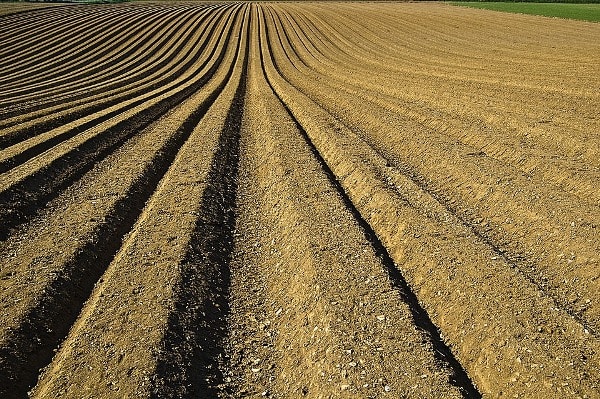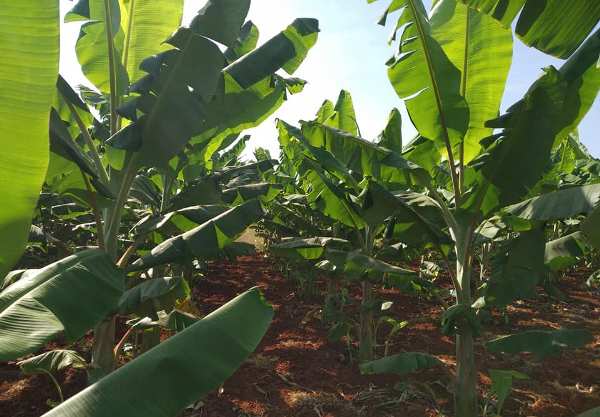Pre-planting Tasks and Post-planting Operations
Today, the topic is about Pre-Planting Tasks; Post-Planting Tasks in farming.
Pre-planting tasks/operations:
What are the pre-planting operations? Pre-planting operations are a series of operations carried out in a farm management system prior to planting the seed or planting material. They are those operations carry out before sowing the seeds. Pre-planting activities are very important; they are the foundation on which builds the success and survival of the crop. Most farmers experience agricultural crop failure because of the failure in the pre-planting operations.
Examples of pre-planting operations are;
These include all forms of operations or activities, carried out on the farm before planting can effectively take place. They include a selection of site, bush clearing, burning of trash, mound making, mulching, and nursery preparation, pricking out, thinning and hardening.
Seed procurement of pre-planting tasks:
Firstly, where and how do you outsource seeds or planting material?
This is where mainly farmers get it wrong. You are expected to get planting materials or seeds from a reputable agro-allied store. The word “reputable” is important here; because, when your seeds or planting materials are bad, you are automatically going to practice crop failure. Not only crop failure, but also huge losses of investments, because the pre-planting operations had carried out, are no longer useful. Imagine planting on large hectares of land, where you have spent handsomely to diligently prepare the land as best as possible, test your soil condition to ascertain the efficiency of the soil, plant using huge numbers of laborers or sections of machinery and after some weeks noticed your seeds did not germinate. It is very traumatic. This is why you should get seeds or planting materials from a traceable and reputable agro-allied store.
Selection of Site:

Selection of site is most important in pre-planting tasks. Consideration in site selection must be based on the size of the farm, type of the crops to be established, the fertility of the soil, topography of the land, water requirement, place of work, accessibility to roads and market, etc. Generally, a neutral loamy soil that is rich in organic manure would be ideal.
- The nature of the land (Topography): This is, whether the selected land is hilly or level. A fairly level land must be chosen to reduce the cost of land preparation and erosion control problem.
- The type of soil: This must be considered in the choice of farm site or location. This is because the soil is the medium for plant growth and poor soil will generate poor yield.
- Availability of inputs such as labor and planting materials: The workers to be employed that will work on the farm must be obtained in the area where the farm is to be located. Crop planting materials should be available. The ease of transporting farm produce and sale also guard the selection of a farm site.
Site Clearing:
Bush or site clearing is done to prepare the land for farming. Slashing is done using cutlass or machete depending on the thickness of the bush.
Burning:
This can be optional, depending on the volume of trash. It could be practiced to help dispose of cleared vegetation. The ash, after burning helps decrease soil acidity as well as the incidence of soil pests and diseases.
Stumping:
This stumping operation involves the use of farm tools like the cutlass, spade, mattock, ax, bull-dozer, etc, to manually or mechanically remove or uproot the base of trees and shrubs. This is done to compose cultivation easier and free from obstruction.
Plotting:
This plotting operation is the mapping out or demarcation of farmlands into plots. Among the tools necessary, here are ranging poles and measuring tapes.
Planting Operations:
Seed Treatment:
This is a method of dressing the seeds or the planting materials, to adequately prepare them for planting, so as to ensure good germination or sprouting, and subsequently good yield.
Spacing and Planting:
Spacing refers to the planting distance allowable for every crop species, between inter-row and intra-row plants. It varies from one plant species to another plant. Incorrect spacing can lead to over-crowding, resulting in competition for light, water space, soil nutrient, etc.
Seed Rate:
This is the number of seeds or planting materials required to plant up an area indicated in the quantity of seed per stand of the field.
Seed viability:
It is very imperative to test the viability of the seeds before planting to determine if the embryo of the seed is alive or dead. Although, in most cases, the manufacturer of the seeds would have specified the viability percentage; but in cases where this is devoid, you can carry out a very easy viability test using water. Just pour the seeds in water, leave for about 20 minutes, the floating ones are dead, though the ones below are good for planting.
Planting Date:
This planting date varies with crops, species and climatic factors. However, there is early planting between March and May and late planting from August to October month.
Planting Depth:
This is the sowing depth required or allowed in the plant to perform well in the field.
Transplanting:
This is the procedure of removing the seedling from the nursery to the field, where they will be allowed to establish until maturity and harvesting.
Pricking:
This is the removal of seedlings at two-leaf from pre-nursery to nursery.
Read: How to Determine the Age of Farm Animals.
Post-planting operations:

What are the post-planting operations?
Post-planting operations or activities are the series of activities carried out in a farm management system between the period of planting and harvesting. They are essential to achieve a reasonable yield.
Examples of post-planting operations are;
Weeding:
Of course, weeding is the main important post-planting operations. If you do not weed farm on a regular basis, you are likely to have a very low and suboptimal yield. Weeds are unwanted plants that develop alongside with your crop.
Weeds are genetically more viable and aggressive than crops; they compete with crops for nutrients, air, and water. They harbor pests that can reduce the quantity and quality of your crops. Your crops could find it very difficult to outwit the weeds if you do not intervene; your intervention is in the type of manual or mechanical weeding or using herbicides. Herbicides are used to controlling weeds.
Weeding should be done 2 to 3 times before harvesting. First, weeding should take place 2 to 3 weeks after planting while the second weeding should take place six weeks after the first weeding.
Thinning:
This is the removal of weak, dead or excess plants or seedlings, so as to enable the better-established and healthy ones to develop properly.
Supplying:
This supplying operation is the replacement of dead seedlings with other planting materials, so as not to allow the creation of unnecessary spaces.
Mulching:
This involves the use of mulch materials like dry grasses, wood shavings, straw and etc, to cover the soil surface, so as to prevent the loss of soil water by evaporation, prevent the growth of weeds, regulate soil temperature and add organic manure to the soil.
Manuring or Fertilizer Application:
An adequate supply of nutrients is required by plants for growth yield and increased yield. This is getting by incorporating organic manure and inorganic fertilizers into the soil.
When to apply fertilizers, apply fertilizers after every weeding operation. It gives the crop the full access to the fertilizer, thus, enhancing efficiency.
Crop pest and disease protection:
Aside from weeding, another very important post-planting operation is pest and disease protection. Pest and disease have the capability to reduce your crop yield; pest reduces the quantity while diseases reduce the quality. You can manage the pest in various ways; you can go organic using natural materials such as Neem oil or inorganic by using synthetic pesticides for example Laraforce.
You must apply pesticides as soon as you observe the activities of pests. However, you should stop the application of synthetic pesticides at about five weeks before harvesting; this is to avoid food poisoning. Organic pesticides like Neem oil can be functional indiscriminately, but it should also be controlled for economic reasons.
Harvesting:
Harvesting process marks the end of cultivation. This is the period farmers look forward to seeing. The harvesting period varies with the gestation period of the crop. As soon as the crop reaches the max out of maturity, it can be harvested.
The method of harvesting also differs; the way harvest root crops like yam and cassava is different from the ways you harvest non-root crops like banana and tomato. Irrespective of the process of harvesting, it should not inflict any damage to the crop. This will increase the shelf life of the crop through storage and maintain the quality.
If you want to earn more in cultivation, then you must implement these farm management practices when managing a farm business of any capacity; they would not increase the cost of farm production, instead, they would improve cultivation process. You can manage them in any of the farm management software.
That’s all folks about pre-planting tasks and post-planting tasks.
Read: Types of Grow Lights for Indoor Gardening.
Thank you for the document. it helped me a lot